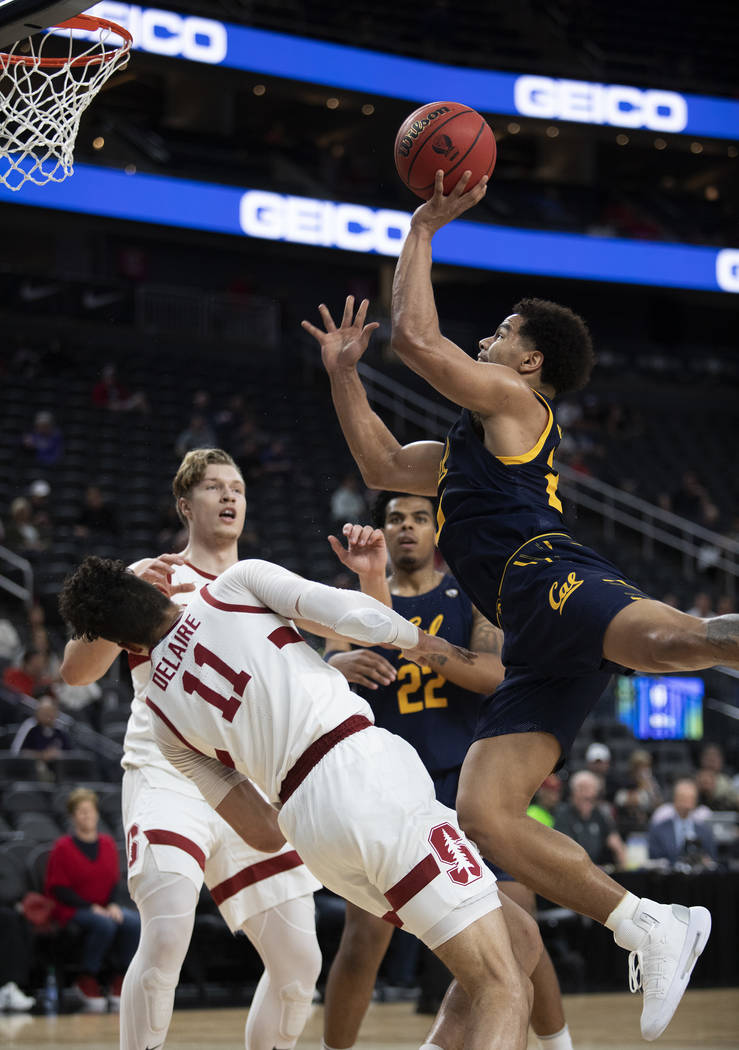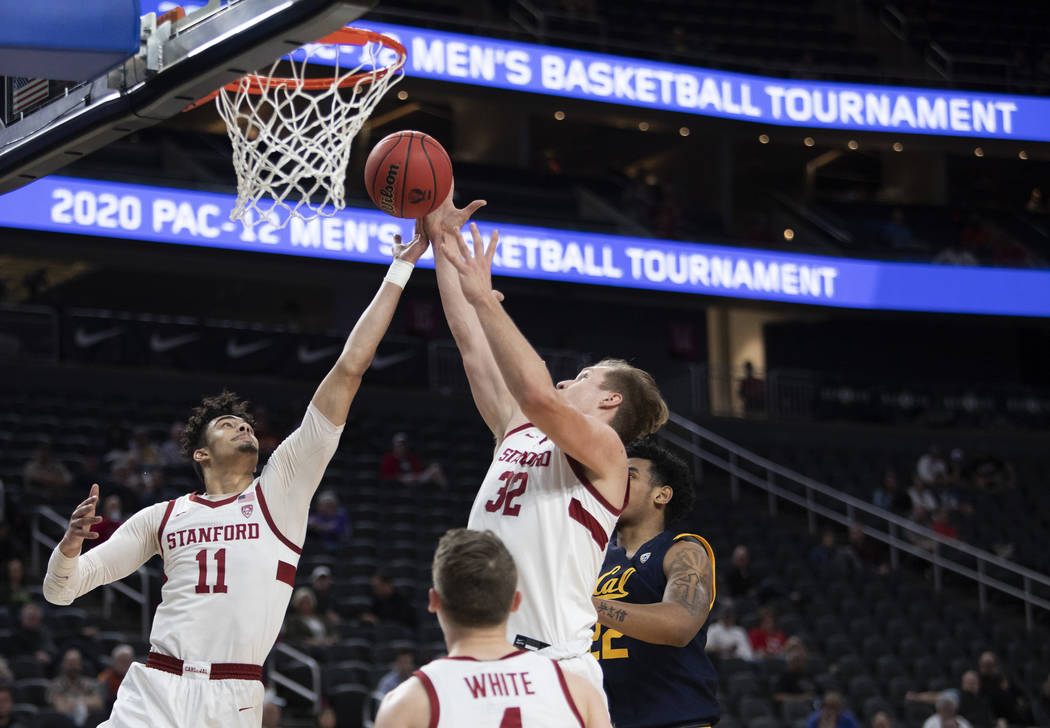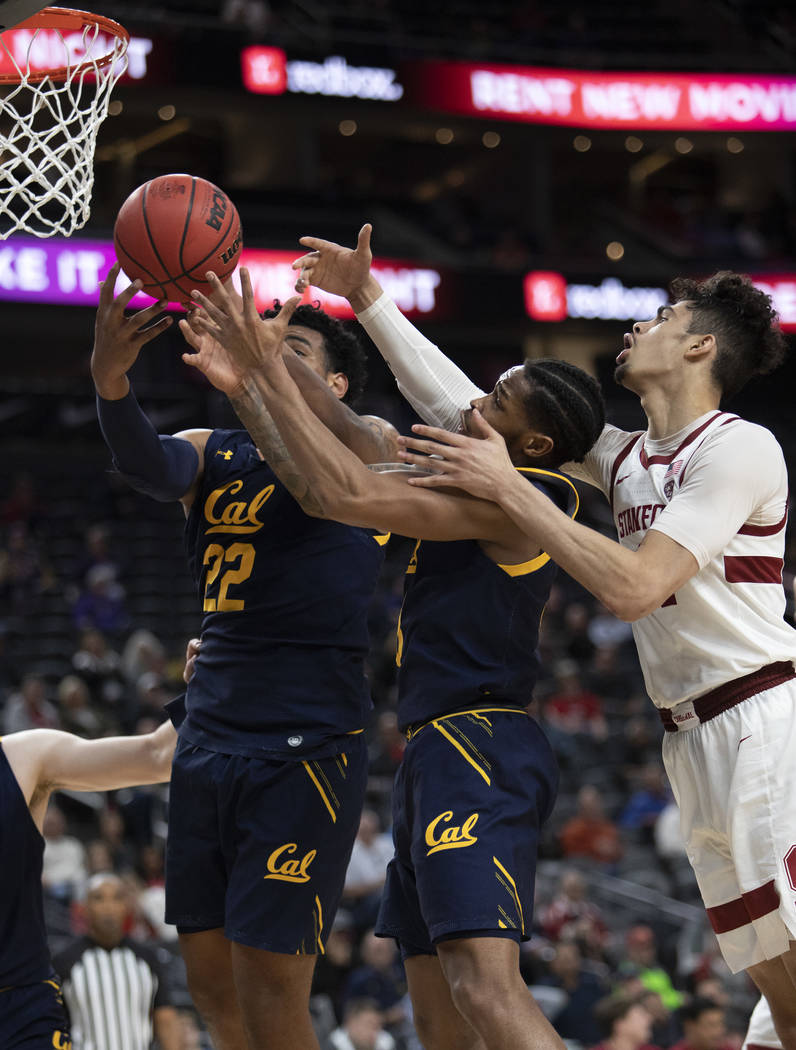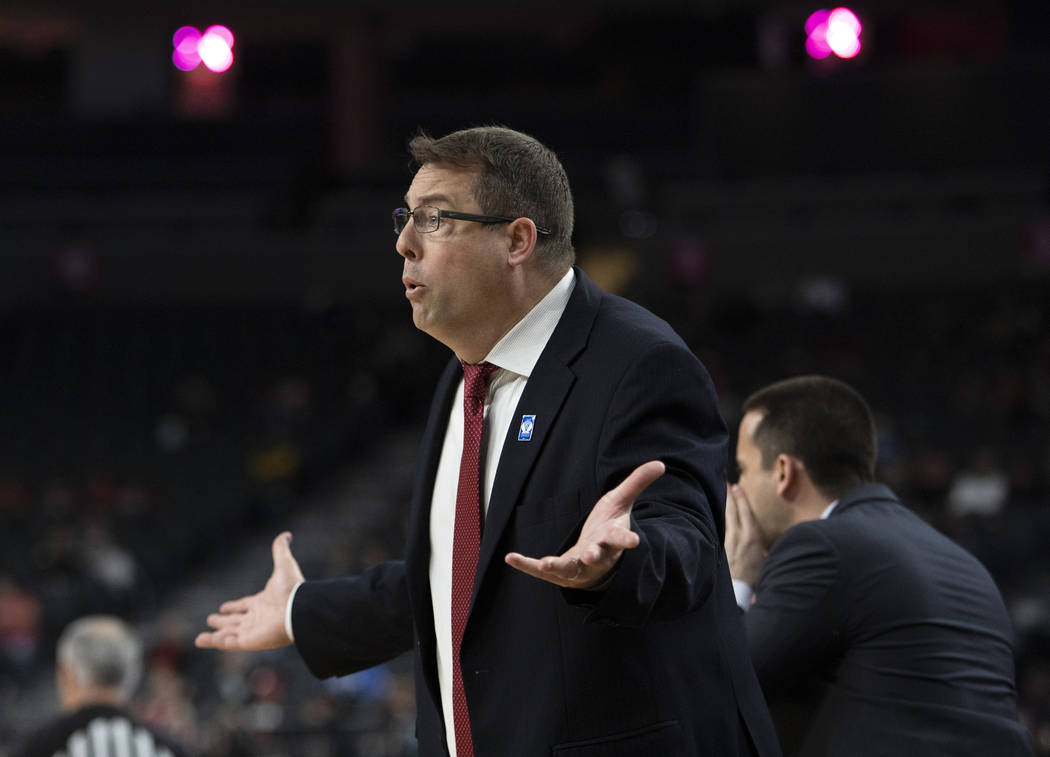Stanford-Cal game serves as preview of March Madness minus fans
Stanford lost to archenemy California 63-51 in a Pac-12 men’s basketball tournament first-round game Wednesday night at T-Mobile Arena.
The Stanford Tree, the unofficial mascot of the prestigious private research university, did not get into fistfight with Oski the Bear, the official mascot of the University of California system flagship campus.
This actually happened during a 1995 basketball game at Maples Pavilion on the Stanford campus.
The Tree did not parade around the T-Mobile Arena court in a drunken stupor subsequently confirmed by a sobriety test. This, too, actually happened during a 2006 game between Stanford and Cal at Cal’s Haas Pavilion.
Neither happened at T-Mobile Arena.
The Stanford Tree was not in attendance.
Nor Oski the Bear.
Their pep bands and cheerleaders also were no-shows, having taken up the Pac-12 on its offer to remain at home as a coronavirus precaution.
The Tree and Oski are to be lauded for their vision.
About 15 minutes before their teams squared off in what surely will be remembered as one of the strangest Stanford-Cal games in series history, the Pac-12 fell in step with most of the other major conferences.
It announced the remainder of its tournament would be played without spectators, save for essential staff, TV partners, credentialed media and limited family and friends of the players.
Most Stanford and Cal fans were prescient, too. Few turned out for Wednesday’s game.
T-Mobile was so devoid of spectators — and so subdued without the bands and the Tree and Oski the Bear — that the squeak of sneakers and guys playing defense resonated in the upper reaches of the arena where the hockey banners hang.
One could almost hear TV analyst Bill Walton pontificating about the Grateful Dead during free throws.
It was as if all the life had been sucked out of the building and of the postseason in general.
Welcome to March Sadness.
During a TV timeout in the second half, a frantic guy who tries to get the crowd fired up during pauses in the action ran into the stands to deliver a pizza to spectators.
He was careful not to sneeze.
For Pete’s sake
While Stanford and Cal have a long history of getting dander up for each other, one longtime Cal fan who had planned to be on hand for Wednesday’s game before the inevitable announcement recalled a night when the sides actually found common ground.
Pete Newell Jr., 76, witnessed his first Stanford-Cal game in 1955. But the one he remembers most was in 1960, when Pete Newell, his father — the influential coach, scout and molder of NBA big men — was announced to the crowd before coaching in his final Stanford-Cal game.
Pete Newell Sr., a season removed from guiding Cal to the NCAA title, received a rousing ovation.
“My father had announced about three weeks before the end of the season that he was going to retire,” Pete Jr. said. “When he came out, everybody in the arena stood and clapped. Not only did the Cal players clap for him, but the Stanford players were standing in a line, and they all clapped, too.”
One of the Stanford players saluting Newell was John Arrillaga, whose brother, Gabe, had played for Newell at Cal. John Arrillaga became a real estate magnate and a major Stanford benefactor who helped finance the renovations of Stanford Stadium and Maples Arena.
Pete Newell Jr. coached high school basketball in Northern California for 40 years, mostly while sporting a flowing beard and sandals. He now makes his home in Las Vegas. He once played basketball at San Jose State, where he said he still holds an unofficial school record for having attempted seven game-winning shots.
“I missed every damn one, including one on my 21st birthday against USF,” he said.
Contact Ron Kantowski at rkantowski@reviewjournal.com or 702-383-0352. Follow @ronkantowski on Twitter.







































